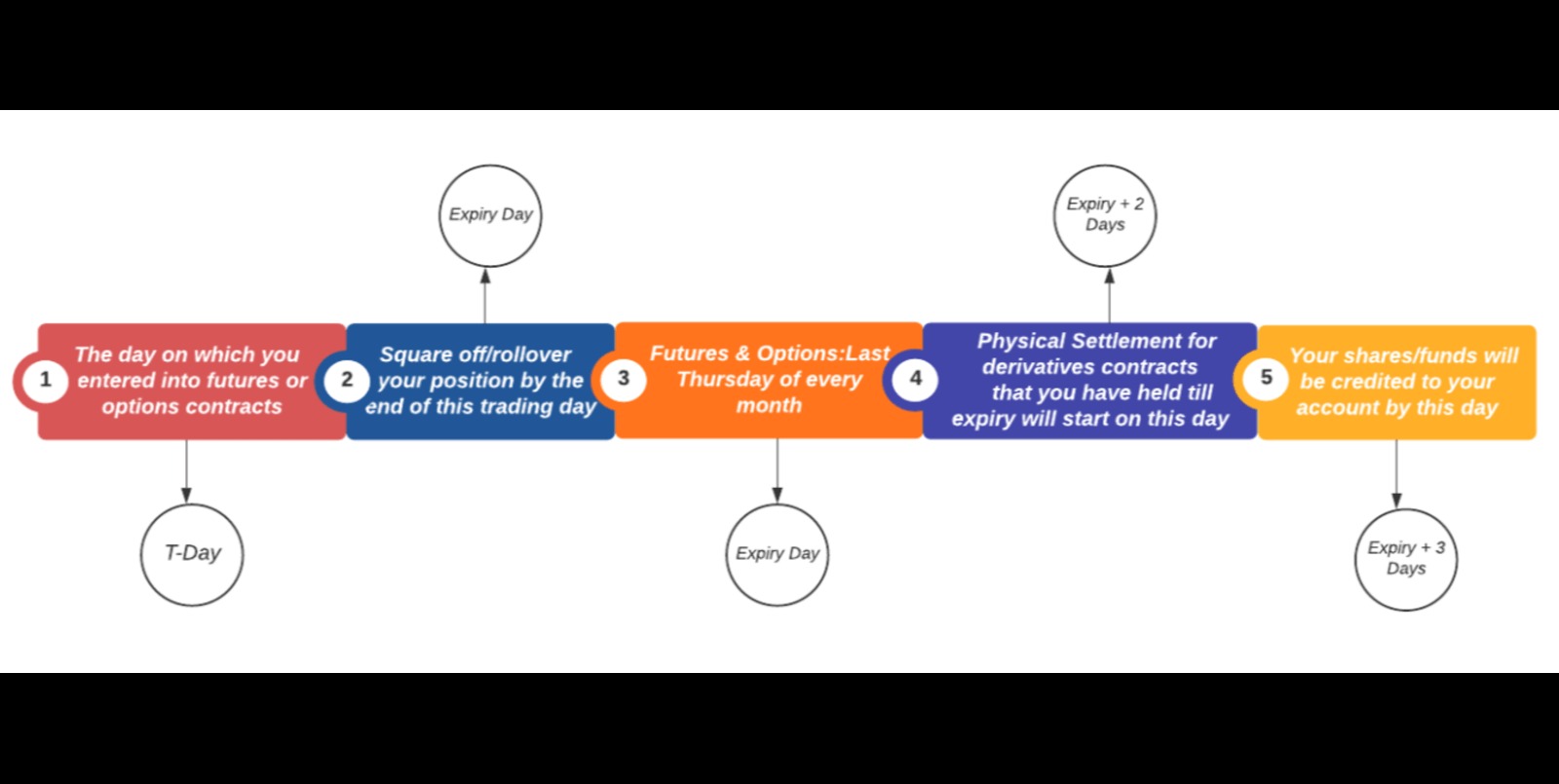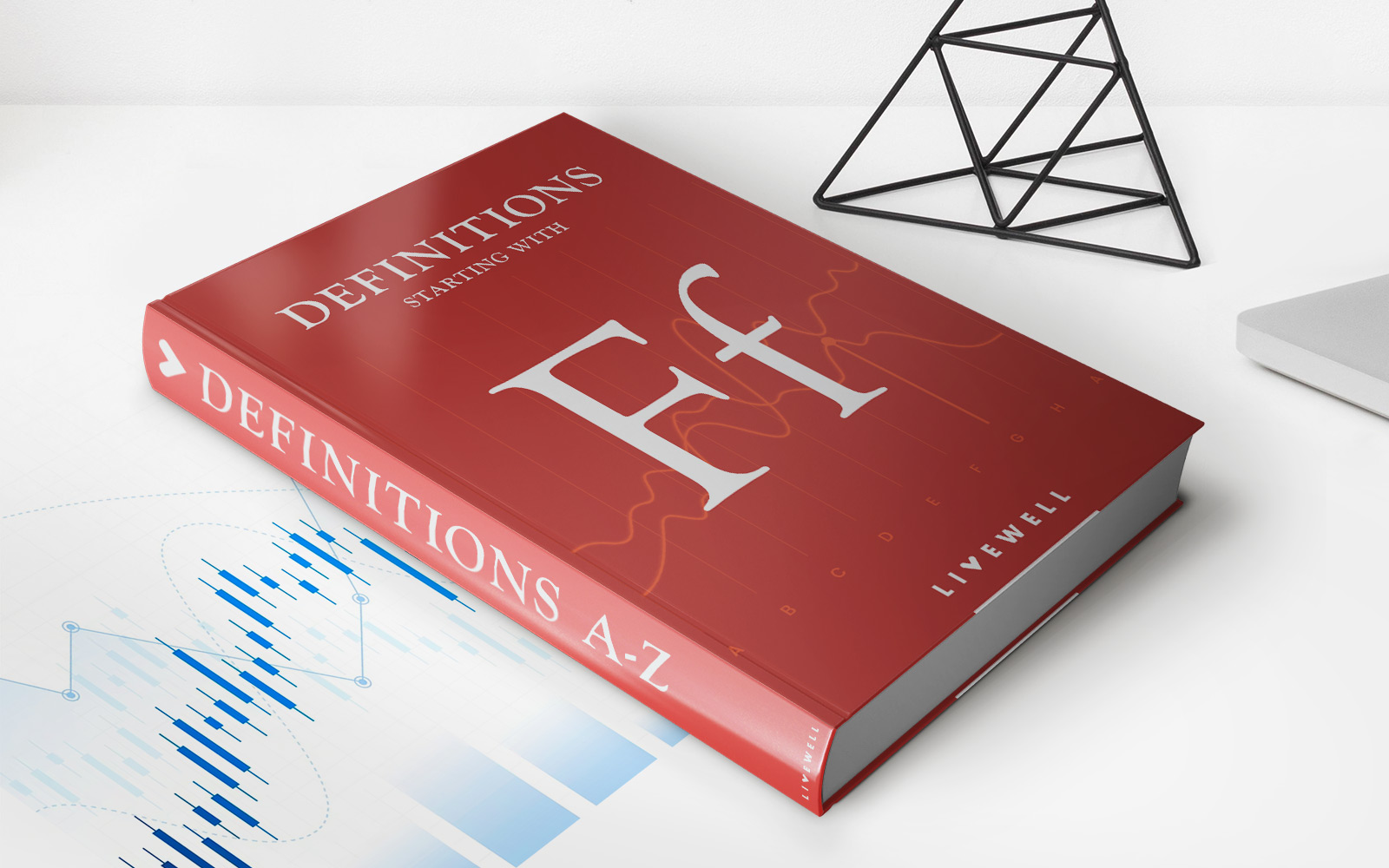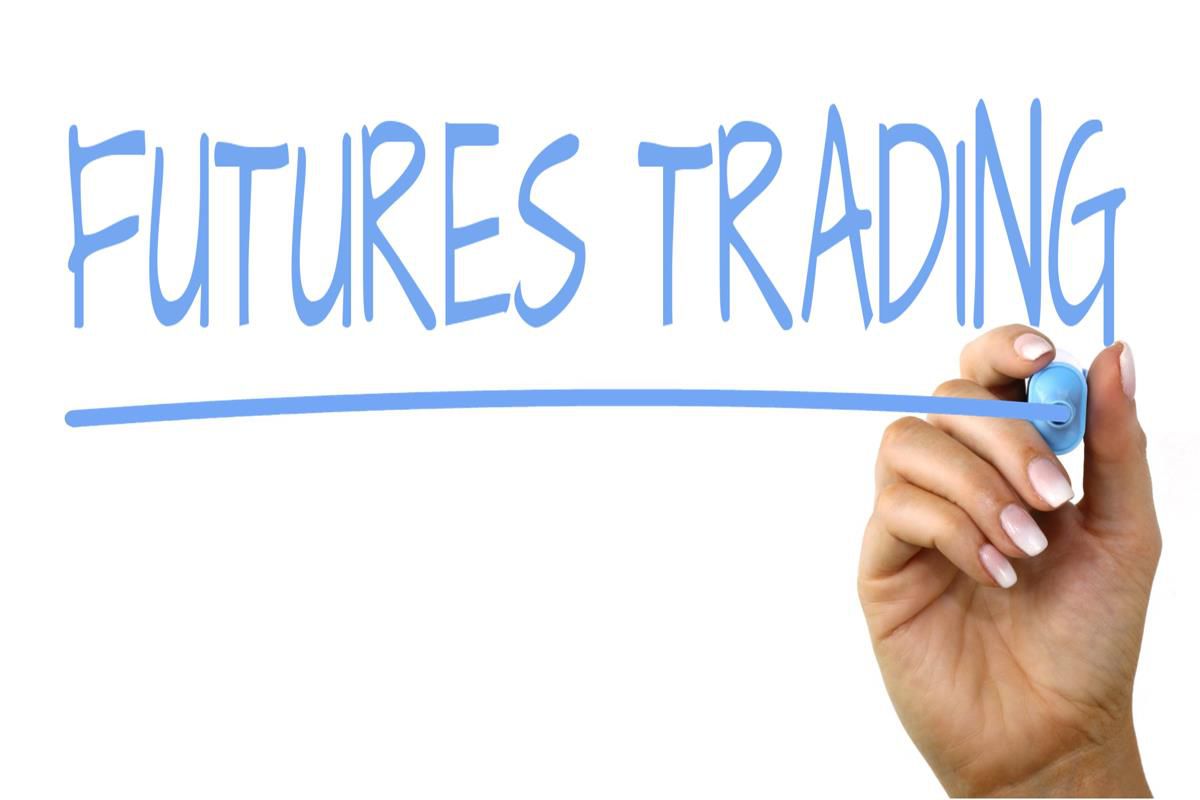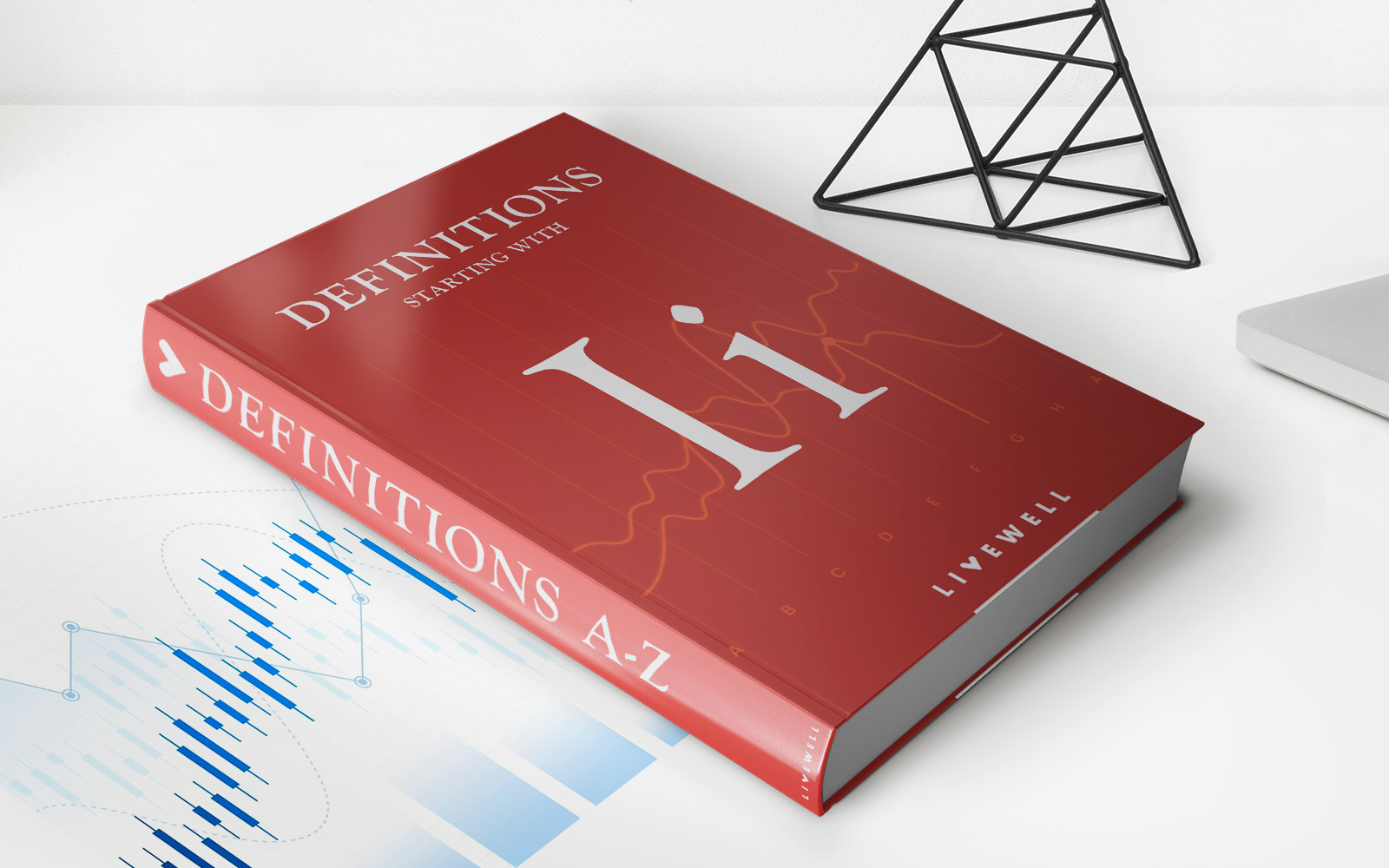

Finance
How To Use Options With Futures Contracts
Modified: February 21, 2024
Learn how to effectively use options with futures contracts in the world of finance. Understand the potential strategies and risks involved to make informed investment decisions.
(Many of the links in this article redirect to a specific reviewed product. Your purchase of these products through affiliate links helps to generate commission for LiveWell, at no extra cost. Learn more)
Table of Contents
Introduction
When it comes to investing in the financial markets, options and futures contracts are popular instruments that traders use to diversify their portfolios and manage risk. Options contracts provide the right, but not the obligation, to buy or sell an underlying asset at a specific price within a set timeframe. On the other hand, futures contracts involve an agreement to buy or sell a specific asset at a predetermined price and date in the future.
In this article, we will explore how to effectively use options with futures contracts to maximize your investment opportunities and mitigate potential risks. By combining these two instruments, traders have the flexibility to create various strategies and profit from market movements without committing substantial capital.
Before we delve into the intricacies of options and futures, it is essential to have a clear understanding of how each contract works independently.
Understanding Options Contracts
An options contract is a derivative that derives its value from an underlying asset, such as stocks, commodities, or currencies. There are two primary types of options contracts: call options and put options. A call option gives the holder the right to buy the underlying asset at a specified price, known as the strike price, before or on the expiration date. Conversely, a put option provides the holder the right to sell the underlying asset at the strike price before or on the expiration date.
Understanding Futures Contracts
A futures contract, similar to an options contract, is a derivative financial instrument. However, unlike options, futures contracts require both parties to fulfill the agreement at the expiration date. The buyer is obligated to purchase the asset, while the seller is obligated to deliver it. Futures contracts are standardized, with predetermined contract sizes, expiry dates, and settlement methods.
Options vs Futures Contracts
While options and futures contracts share some similarities, there are notable differences between the two. Options provide traders with the right, but not the obligation, to buy or sell an asset, while futures contracts require both parties to fulfill their obligations. Additionally, options contracts have an expiration date, whereas futures contracts mature on a specified date.
Furthermore, options contracts have a non-refundable premium that the buyer pays to the seller. This premium provides the right to participate in potential price movements without committing significant capital. Conversely, futures contracts require margin deposits, which act as collateral to mitigate the risk of default.
Advantages of Using Options with Futures Contracts
By combining options and futures contracts, traders can benefit from several advantages:
- Enhanced leverage: Options allow traders to control a larger position of the underlying asset with a smaller premium payment, amplifying potential returns.
- Improved risk management: Options provide a level of protection against adverse price movements, which can be particularly useful when trading volatile futures contracts.
- Increased flexibility: Combining options and futures allows traders to create various strategies to profit from different market conditions.
With an understanding of the basics of options and futures contracts in place, let’s explore some popular strategies for using options with futures contracts in the next section.
Understanding Options Contracts
Options contracts are powerful financial instruments that provide traders with the right, but not the obligation, to buy or sell an underlying asset at a predetermined price within a specific timeframe. By using options, traders can participate in potential price movements without committing significant capital upfront.
There are two types of options contracts: call options and put options. A call option gives the holder the right to buy the underlying asset at a specified price, known as the strike price, before or on the expiration date. On the other hand, a put option grants the holder the right to sell the underlying asset at the strike price before or on the expiration date.
Options contracts consist of several vital components:
- Underlying asset: Options contracts derive their value from an underlying asset, which can include stocks, commodities, currencies, or indices.
- Strike price: The strike price is the predetermined price at which the option can be exercised. It represents the agreed-upon price at which the underlying asset will be bought or sold.
- Expiration date: Options contracts have a specific expiration date, beyond which the right to exercise the option is no longer valid. Traders must decide whether to exercise their options before the expiration date or let them expire.
- Option premium: The option premium is the cost of purchasing an options contract. It is determined by various factors, including the underlying asset’s price, volatility, time to expiration, and interest rates.
Options contracts serve multiple purposes for traders:
- Hedging: Options can be used as a hedging tool to protect against potential losses in a portfolio. By purchasing put options, traders can offset the downside risk of their investments.
- Speculation: Traders can use options to speculate on the direction of the underlying asset’s price. They can buy call options if they anticipate an increase in price or purchase put options if they expect a decline.
- Income generation: Writing, or selling, options contracts can generate income for traders. By selling covered call options, traders receive premiums in exchange for the obligation to sell the underlying asset at the strike price if the option is exercised.
It’s important to note that options trading involves risks and requires an understanding of the underlying asset’s dynamics, market conditions, and risk tolerance. Traders should carefully consider their investment goals and consult with a financial advisor or professional before engaging in options trading.
In the following sections, we will dive deeper into the specifics of futures contracts and explore different strategies for using options with futures contracts to optimize trading outcomes.
Understanding Futures Contracts
Futures contracts are derivative financial instruments that obligate both parties involved to fulfill an agreement to buy or sell an underlying asset at a predetermined price and date in the future. These contracts are standardized and traded on regulated exchanges, providing traders with the opportunity to speculate on future price movements and hedge against potential risks.
Key features of futures contracts include:
- Underlying asset: Futures contracts are based on a wide range of assets, including commodities (such as crude oil, gold, or wheat), financial instruments (such as stock market indices), and currencies.
- Contract size: Each futures contract has a specific size or quantity of the underlying asset that is being traded. For example, a crude oil futures contract may represent 1,000 barrels of oil, while a stock index futures contract may represent a specific dollar value of the underlying index.
- Expiration date: Futures contracts have a predetermined expiration date, which is the date on which the contract matures. At this point, the contract must be settled with the delivery of the underlying asset or a cash settlement.
- Clearinghouse: Futures contracts are typically cleared through a clearinghouse, which acts as an intermediary between the buyer and seller. The clearinghouse ensures the integrity of the contract and guarantees the performance of both parties.
- Margin requirements: To trade futures contracts, traders are required to deposit a margin, which is a fraction of the contract’s total value. This margin acts as collateral to cover potential losses. The margin requirements vary depending on the asset and the exchange’s regulations.
Futures contracts serve several purposes in the financial markets:
- Speculation: Traders can take speculative positions on the future price movements of an asset. If they anticipate an increase in price, they can buy futures contracts (long position), and if they expect a decrease, they can sell futures contracts (short position).
- Hedging: Hedgers use futures contracts to mitigate potential price risks associated with their business operations. For example, a farmer can hedge against a decline in crop prices by selling futures contracts for their produce.
- Arbitrage: Traders may exploit price discrepancies between the futures market and the spot market to generate profits through arbitrage opportunities. They can simultaneously buy in the cheaper market and sell in the more expensive market.
Trading futures contracts involves inherent risks, including market volatility, leverage, and the potential for substantial losses. It is crucial for traders to have a deep understanding of the market dynamics, risk management techniques, and financial instruments before engaging in futures trading.
In the next sections, we will explore the advantages of combining options with futures contracts and various strategies that traders can employ to optimize their investment outcomes.
Options vs Futures Contracts
Options contracts and futures contracts are both derivative financial instruments used by traders and investors to manage risk and speculate on the price movements of underlying assets. While they share some similarities, there are important differences between the two.
Options Contracts
An options contract provides the holder with the right, but not the obligation, to buy or sell an underlying asset at a set price within a specific timeframe. There are two types of options contracts: call options and put options.
Call options give the holder the right to buy the underlying asset at the strike price before or on the expiration date. This is advantageous when the investor expects the price of the asset to rise.
Put options give the holder the right to sell the underlying asset at the strike price before or on the expiration date. This is beneficial when the investor anticipates a decline in the asset’s price.
Options contracts provide flexibility for traders. They can choose whether or not to exercise the option based on market conditions and their own strategies. However, in order to purchase options, buyers must pay a premium to the seller, which is non-refundable.
Futures Contracts
A futures contract, on the other hand, is an agreement to buy or sell an asset at a predetermined price and date in the future. Futures contracts are standardized and traded on regulated exchanges.
Unlike options contracts, futures contracts require both parties involved to fulfill the agreement on the expiration date. This means that if a trader buys a futures contract, they are obligated to take delivery of the asset at the agreed-upon price. Similarly, if a trader sells a futures contract, they are obligated to deliver the asset.
Futures contracts are typically used for hedging or speculating on the future price movements of commodities, financial instruments, or currencies. Traders are required to post margin, which acts as collateral, to cover potential losses.
Differences between Options and Futures Contracts
There are several key differences between options and futures contracts:
- Obligation: Options contracts give the holder the right, but not the obligation, to buy or sell the underlying asset. Futures contracts, on the other hand, require both parties to fulfill the agreement.
- Expiration: Options contracts have an expiration date, beyond which the option becomes invalid. Futures contracts have a specified maturity date.
- Capital Requirement: Options contracts require the payment of a non-refundable premium, which is generally lower than the margin required for futures contracts.
- Risk Profile: Options contracts offer limited risk, as the maximum loss is limited to the premium paid. Futures contracts involve unlimited risk, as the price of the underlying asset can move against the trader.
Understanding the differences between options and futures contracts is crucial for traders to determine which instrument aligns with their investment goals, risk tolerance, and trading strategies. By incorporating both options and futures contracts, traders can develop effective strategies to manage risk and optimize their trading outcomes.
Advantages of Using Options with Futures Contracts
Combining options with futures contracts can provide traders with a range of advantages that enhance their trading strategies and improve their overall investment outcomes. By leveraging the benefits of both instruments, traders can optimize risk management, increase flexibility, and potentially amplify returns. Here are some key advantages of using options with futures contracts:
- Enhanced leverage: Options allow traders to control a larger position of the underlying asset with a smaller premium payment. This amplifies potential returns as even a small price movement in the underlying asset can result in significant gains. By utilizing options alongside futures contracts, traders can enhance their overall trading leverage and capitalize on market opportunities.
- Improved risk management: Options provide a level of protection against adverse price movements that can be particularly beneficial when trading volatile futures contracts. By purchasing put options, traders can limit their downside risk and protect their positions from significant losses. This flexibility allows traders to participate in the potential upside of a futures contract while reducing the exposure to potential downside risk.
- Increased flexibility: Combining options and futures contracts allows traders to create various strategies that can profit from different market conditions. By using options, traders can fine-tune their positions, implement hedging strategies, or generate income through option writing. This flexibility enables traders to adapt their strategies to changing market dynamics and optimize their trading outcomes.
- Diversification: Options with futures contracts provide traders with a diversified approach to their investment portfolios. By incorporating different underlying assets and various options strategies, traders can spread their risk across different market sectors and increase the potential for consistent returns. This diversification reduces the exposure to individual stock or asset risks and safeguards against unexpected market events.
- Income generation: Options writing can generate income for traders. By selling options contracts, traders collect premium payments, which can act as a consistent income stream. This income can offset potential losses from other trades or add to overall portfolio returns. Traders can selectively sell call options on assets they already own (covered call strategy) or naked options on assets they believe will not reach the strike price (cash-secured put strategy).
It is important to note that while options with futures contracts offer numerous advantages, they also involve risks. Traders should carefully assess their risk tolerance, understand the complexities of both instruments, and have a solid understanding of the underlying assets and market dynamics before implementing these strategies.
By combining the advantages of options and futures contracts, traders can create sophisticated trading strategies that align with their investment goals and risk profile. These strategies allow traders to mitigate risk, optimize returns, and navigate changing market conditions effectively.
Strategies for Using Options with Futures Contracts
When it comes to using options with futures contracts, there are various strategies that traders can employ to optimize their trading outcomes. These strategies provide flexibility, improve risk management, and allow traders to capitalize on different market scenarios. Here are some common strategies for using options with futures contracts:
- Protective Put: The protective put strategy involves buying a put option on a futures contract to protect against potential downside risk. This strategy is useful when holding a long futures position and wanting to limit losses in the event of a market downturn. The put option provides insurance by allowing the trader to sell the underlying asset at a predetermined price, thus offsetting any losses incurred from the futures contract.
- Covered Call: The covered call strategy entails owning the underlying asset and simultaneously selling call options to generate income. This strategy is suitable when traders expect the price of the underlying asset to remain relatively stable or slightly increase. By selling the call options, traders earn premium income, which can offset any potential losses from the underlying asset’s price movement. If the price of the asset rises and the call option is exercised, the trader is obligated to sell the asset at the agreed-upon price.
- Straddle: The straddle strategy involves simultaneously buying a call option and a put option with the same strike price and expiration date. Traders use this strategy when they anticipate significant price volatility but are unsure of the direction of the price movement. The goal is to profit from a substantial price swing in either direction. If the price moves significantly up or down, the trader can exercise either the call or put option, while letting the other option expire.
- Long Strangle: The long strangle strategy is similar to the straddle strategy but involves purchasing an out-of-the-money call option and an out-of-the-money put option. This strategy allows traders to profit from significant price movements without committing substantial capital. If the price moves substantially up or down, one of the options can be exercised for a profit, while the other option expires.
- Bull Spread: The bull spread strategy involves buying a call option with a lower strike price and simultaneously selling a call option with a higher strike price. This strategy is employed when traders have a bullish outlook on the underlying asset’s price. The lower strike call option provides potential upside profits, while selling the higher strike call option helps reduce the cost of the trade.
- Bear Spread: The bear spread strategy is the opposite of the bull spread strategy. Traders employ this strategy when they anticipate a decline in the underlying asset’s price. It involves buying a put option with a higher strike price and selling a put option with a lower strike price. The higher strike put option provides potential downside profits, while selling the lower strike put option helps reduce the cost of the trade.
These are just a few examples of strategies for using options with futures contracts. Traders should consider their investment goals, risk tolerance, and market outlook before implementing any strategy. It is also important to stay updated with market trends and economic factors that may impact the chosen strategy.
Understanding the intricacies of these strategies and practicing risk management techniques is crucial for successful implementation. Traders should consider consulting with a financial advisor or professional to gain further insights and guidance specific to their individual trading objectives.
Examples of Using Options with Futures Contracts
Using options with futures contracts can provide traders with a wide range of trading opportunities and strategies. Let’s explore a few examples of how options can be effectively combined with futures contracts:
- Example 1: Hedging with Protective Puts
- Example 2: Generating Income with Covered Calls
- Example 3: Speculating with Long Strangles
- Example 4: Optimizing Risk-Return with Bull Spreads
Suppose you are a farmer who anticipates a decline in the price of corn. To protect yourself from potential losses, you can purchase a futures contract to sell your corn at a predetermined price. However, to further hedge your position, you can also buy put options on the same corn futures contract. If the price of corn indeed drops, the put option allows you to sell your corn futures contract at a predetermined strike price, thereby mitigating your losses.
Imagine you own 100 shares of a tech company’s stock and believe the price will remain relatively stable in the near term. To generate additional income from your stock holdings, you can sell call options on your shares, effectively implementing the covered call strategy. By selling the call options, you receive premiums, which serve as extra income. If the price of the stock remains below the strike price of the call option, the option will likely expire worthless, and you retain both the stock and the premium.
Suppose you anticipate a significant price movement in a particular commodity but are unsure in which direction it will occur. One strategy to capitalize on potential volatility is to purchase a call option and a put option, both out-of-the-money, on a futures contract for the commodity. This long strangle strategy allows you to profit if the price moves significantly in either direction while limiting your risk to the premium paid for both options. If the price does not move significantly, you may experience a loss as both options expire worthless.
Let’s say you are bullish on the price of crude oil and want to maximize potential profits while minimizing upfront costs. You can implement a bull spread strategy by purchasing a call option with a lower strike price and simultaneously selling a call option with a higher strike price on a crude oil futures contract. This strategy allows you to benefit from an upward price movement in oil while offsetting some of the premium costs by selling the higher strike call option. Your potential profits are limited to the difference in strike prices, while your risk is limited to the net premium paid.
These examples illustrate how options can be effectively utilized with futures contracts to achieve different trading objectives. It is important to note that these strategies involve risks, and traders should thoroughly analyze market conditions, properly manage their risk exposures, and adjust their strategies based on changing market dynamics.
Traders can explore and customize these examples to suit their specific investment goals, risk tolerance, and market outlook. It is recommended to conduct thorough research, seek guidance from financial professionals, and practice with simulated trading platforms to gain experience and familiarity with options and futures contract strategies.
Risks and Considerations
While using options with futures contracts can offer numerous advantages, it is important for traders to be aware of the risks and considerations associated with these strategies. Understanding these risks will help traders make informed decisions and develop effective risk management strategies. Here are some key risks and considerations to keep in mind:
- Market Risk: Both options and futures contracts are subject to market risks. Price fluctuations in the underlying assets can result in significant gains or losses. Traders should be prepared for market volatility and carefully analyze market trends, economic indicators, and relevant news events before entering into options and futures contracts.
- Options Expiration: Options contracts have expiration dates, beyond which the options become worthless. Traders need to monitor their options positions closely and decide whether to exercise or sell the options before they expire. Failure to take action before expiration may result in the loss of the option premium paid.
- Limited Time Frame: Futures contracts have predetermined expiration dates, which may not align with traders’ desired time frames. Traders must plan their strategies accordingly and be mindful of contract expiration dates to avoid unwanted delivery obligations or the need for contract rollovers.
- Leverage and Margin: Trading options and futures contracts involves leveraging capital and may require margin deposits. While leverage can amplify gains, it can also magnify losses. Traders should carefully consider their risk tolerance and have sufficient capital or margin to cover potential losses.
- Complexity: Options and futures contracts can be complex financial instruments, requiring a deep understanding of their mechanics and various strategies. Traders should thoroughly educate themselves on the terms, concepts, and trading strategies associated with options and futures contracts before engaging in trading activities.
- Liquidity and Execution: Some options and futures contracts may have limited liquidity, resulting in wider bid-ask spreads and potential difficulties in executing trades at desired prices. Traders should be mindful of the liquidity of the instruments they trade and be prepared for potential market slippage and volatility during execution.
- Regulatory and Counterparty Risk: Like any financial market transaction, options and futures contracts are subject to regulatory oversight and counterparty risk. Traders should ensure they trade on regulated exchanges and employ risk management techniques to mitigate the potential impact of counterparty default.
It is crucial for traders to conduct thorough research, stay informed about market conditions, and carefully plan their trading strategies. Risk management techniques, such as setting stop-loss orders, diversifying portfolios, and practicing position sizing, can help mitigate potential risks associated with options and futures trading.
Furthermore, traders should consider seeking advice from a financial advisor or professional with expertise in options and futures trading. This can provide valuable insights tailored to individual trading goals and risk profiles.
By understanding and managing the risks and considerations associated with options and futures contracts, traders can better navigate the complexities of the financial markets and maximize their potential for successful trading outcomes.
Conclusion
Options and futures contracts offer traders powerful tools to diversify their portfolios, manage risk, and capitalize on market opportunities. By combining these two instruments, traders can effectively enhance their trading strategies and optimize their investment outcomes.
Throughout this article, we have explored various aspects of options and futures contracts, including their definitions, differences, advantages, strategies, and associated risks. Understanding the mechanics and the potential of these financial instruments is crucial for successful trading.
Options contracts provide traders with the flexibility to participate in market movements without committing significant capital, while futures contracts offer standardized agreements for buying or selling assets in the future. By using options with futures contracts, traders can enhance leverage, refine risk management techniques, increase flexibility, and generate income.
From protective puts and covered calls to straddles and spreads, there are numerous strategies available to traders depending on their market outlook and objectives. However, it is important to remember that these strategies involve risks, including market volatility, expiration dates, leverage, and potential losses.
To mitigate these risks, traders should thoroughly educate themselves, conduct proper research, and devise effective risk management strategies. Seeking guidance from financial professionals can also provide valuable insights and improve decision-making.
Ultimately, the successful utilization of options with futures contracts requires a combination of knowledge, experience, and careful analysis of market conditions. Traders should remain diligent, adaptive, and responsive to changing market dynamics as they implement these strategies.
In conclusion, options and futures contracts offer traders a diverse range of opportunities in the financial markets. By understanding their intricacies, traders can unlock their potential and optimize their trading outcomes. It is essential to continually learn, adapt, and monitor market conditions to refine and improve trading strategies. With proper risk management and informed decision-making, options with futures contracts can be valuable instruments in a trader’s toolkit.














